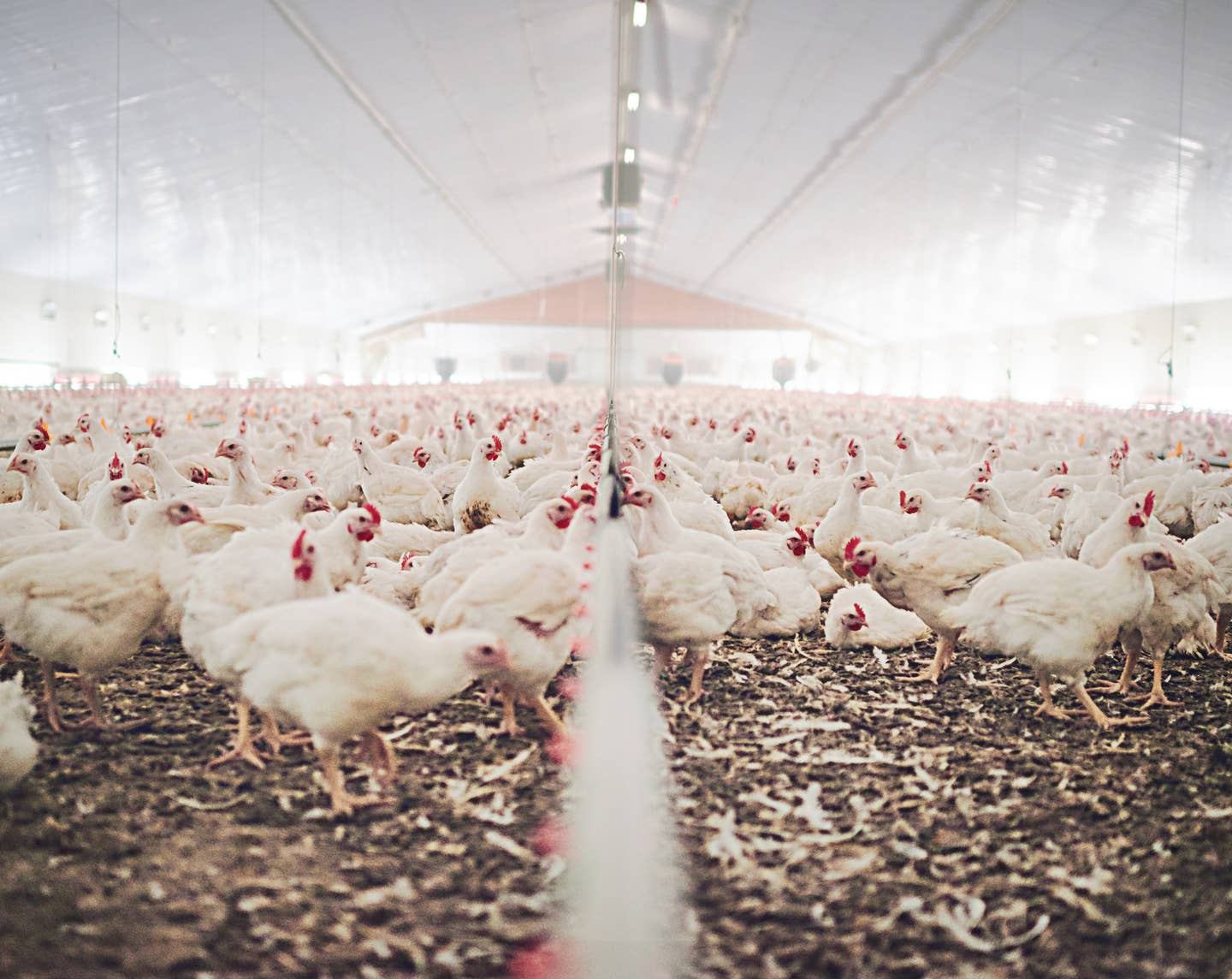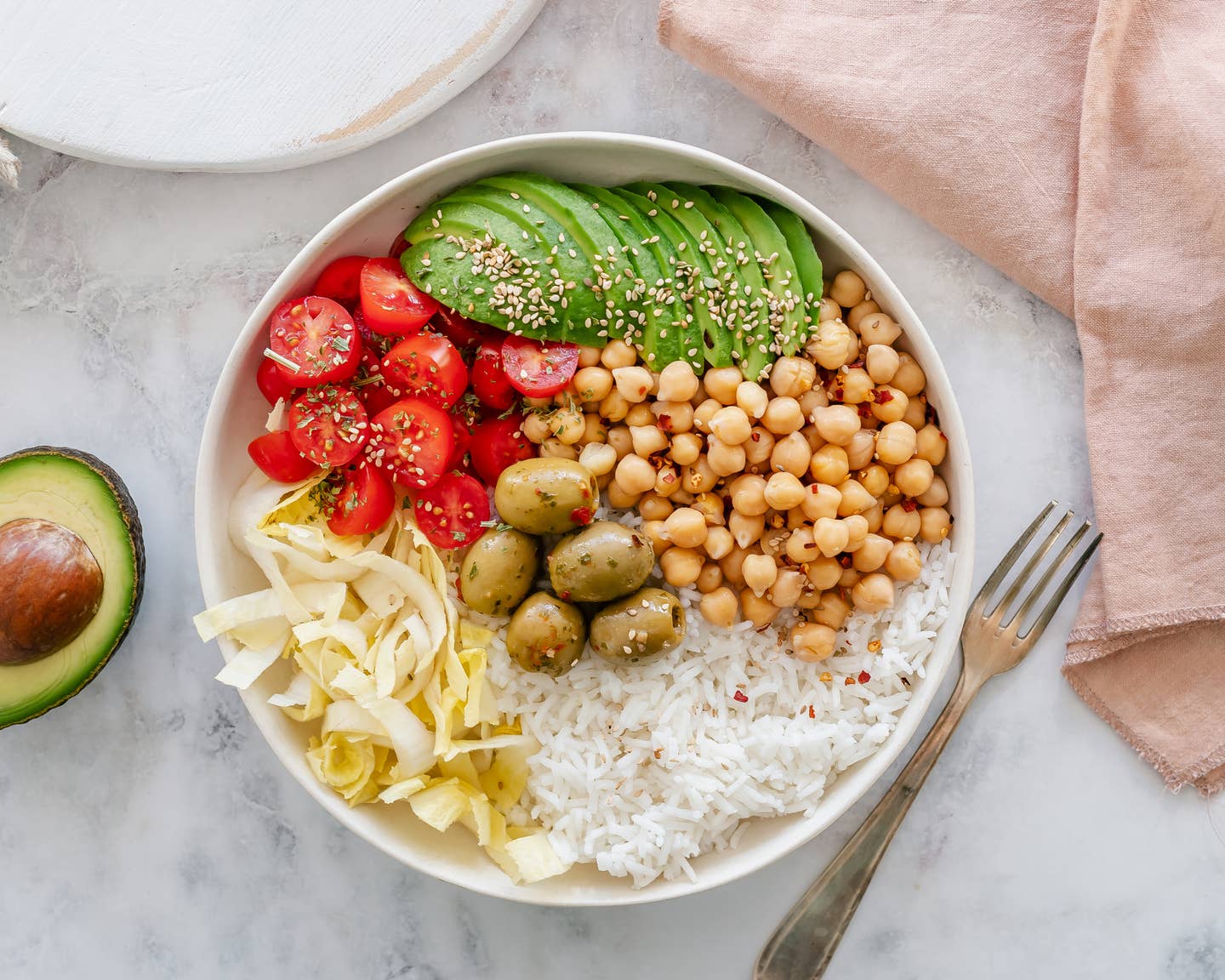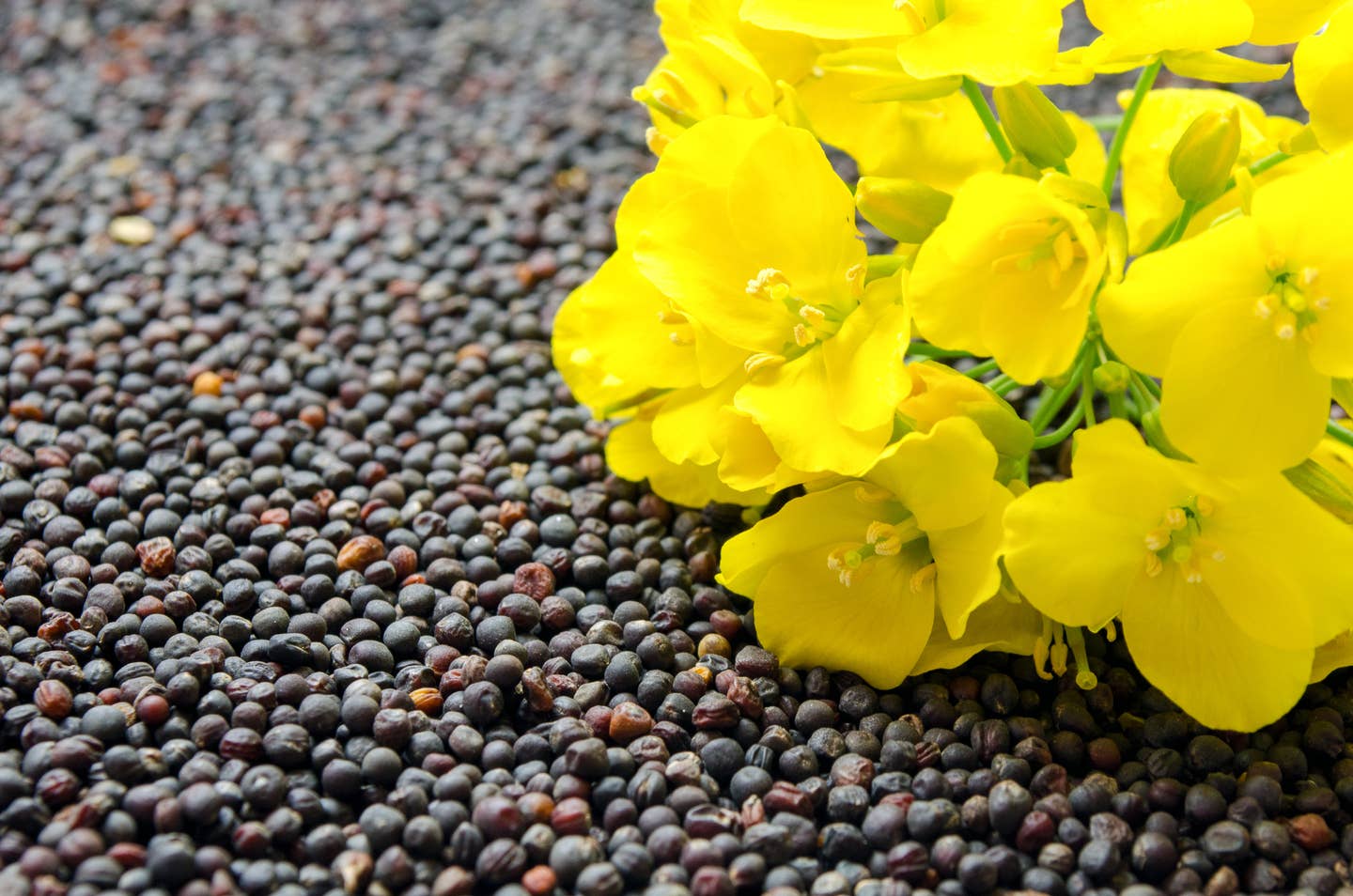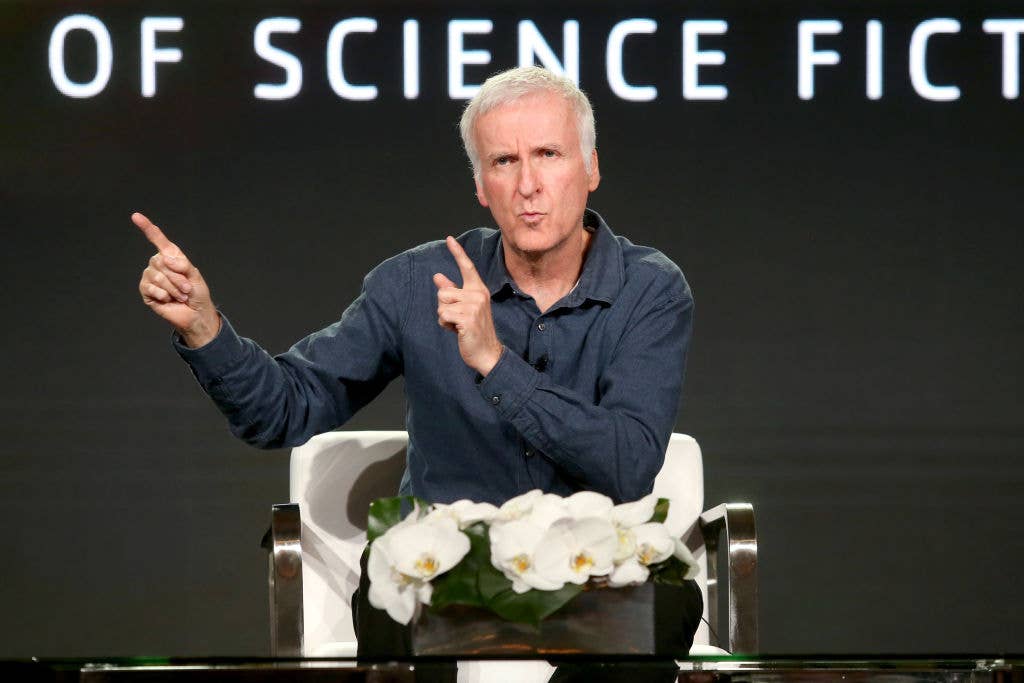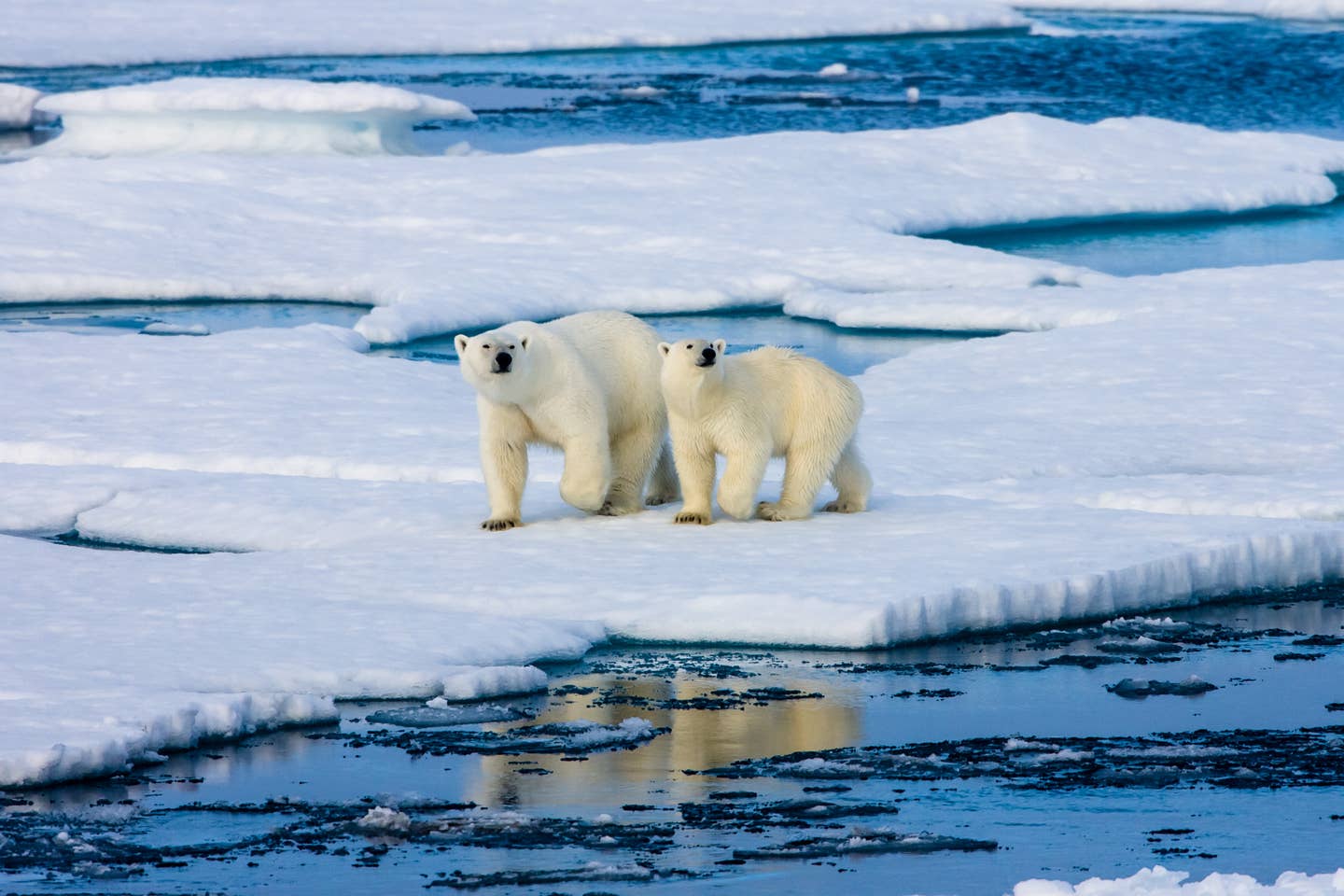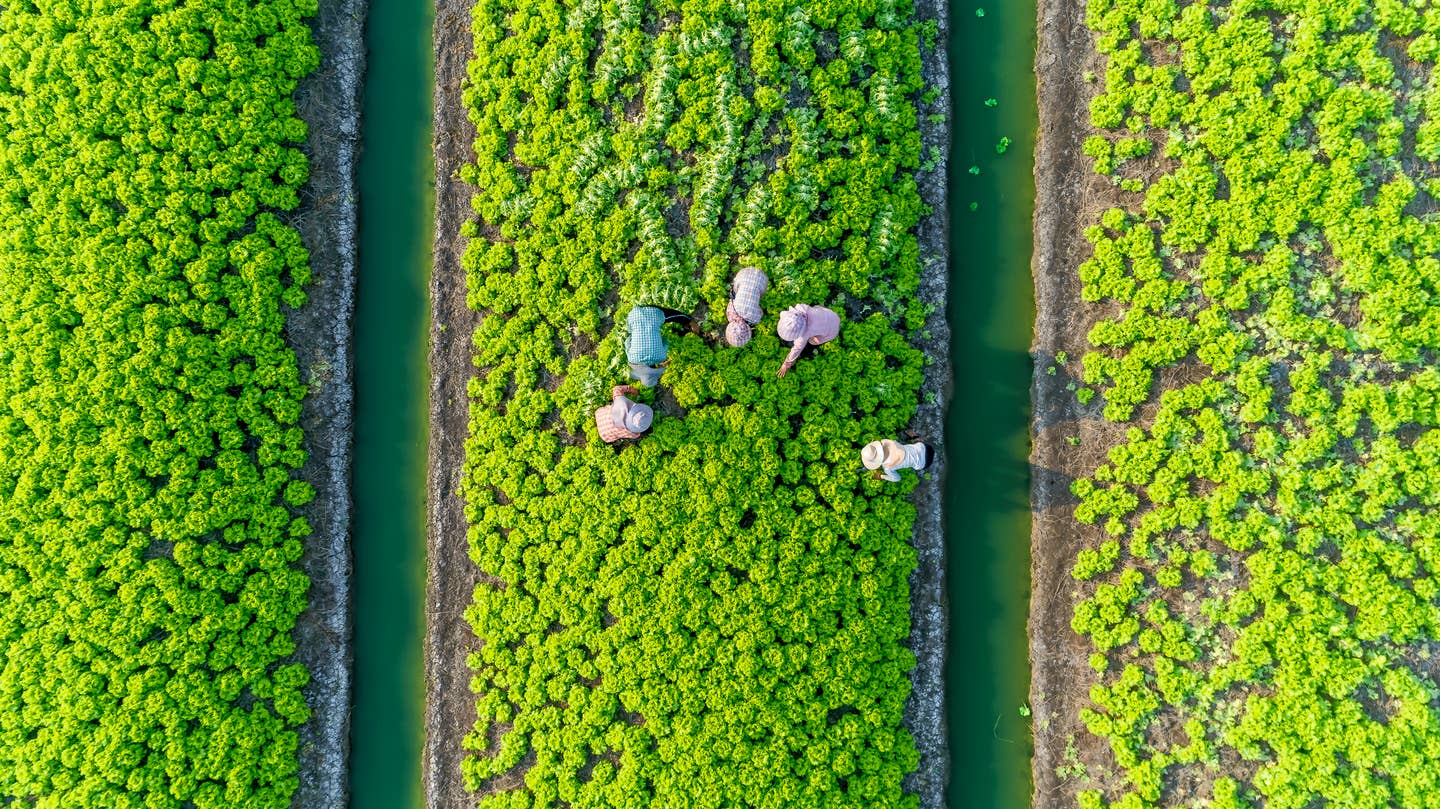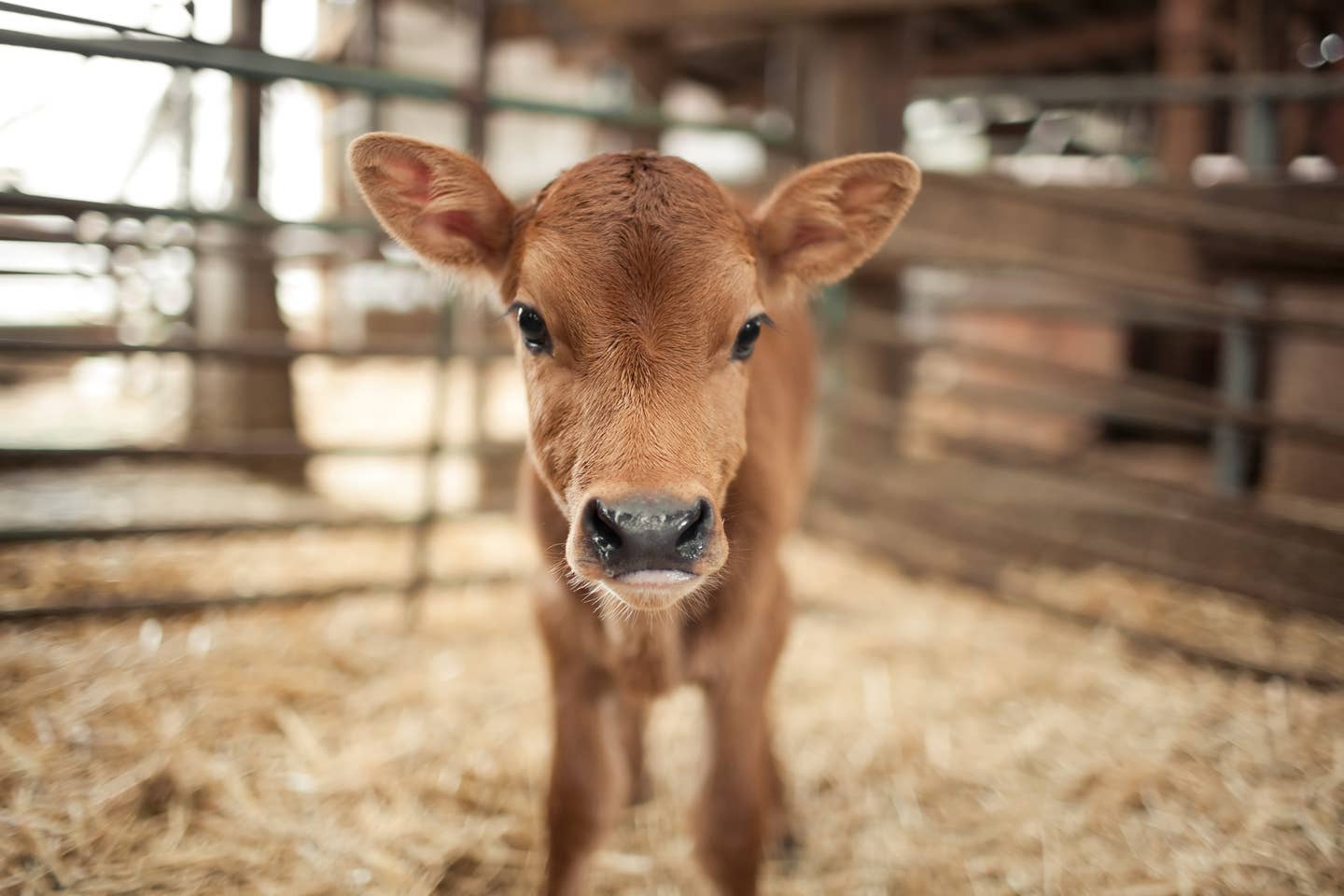
If You Want to Lower Methane Emissions, Feed a Cow Some Seaweed
There's a reality of dairy and meat farming that most people would care not to think about: Belching, farting cows. This is what cows do as they turn cheap grass feed into energy, and one woman entrepreneur has a vision of how to lower the amount of gas that cows produce by feeding them seaweed.
Why does it matter? The amount of methane in our atmosphere just hit the highest level in human history and is increasing at its fastest recorded rate, according to the National Oceanic and Atmospheric Administration (NOAA). The methane entering the Earth's atmosphere is being driven up by livestock, transportation, landfills, and other industrial polluters. Methane is a fast-heating gas that works just like a flame on your stovetop: Methane burns hot and it burns quickly and is more than 25 times as potent as carbon dioxide at trapping heat in the atmosphere.
As our global atmosphere heats up at a rate faster than at any time we've measured, the climate disasters are mounting. In 2021, the US suffered 20 climate disasters, in the form of storms, fires, floods, and severe weather, causing $145 billion in damage, and the loss of human lives.
Cows are unwitting culprits in climate change
Just by changing a cow's feed and adding seaweed to the mix, farmers could help their cows lower methane gas emissions dramatically by suppressing their gassy burps, according to farmer-turned-green-entrepreneur, Joan Salwen. Salwen is the founder of Blue Ocean Barns, a company on a mission to solve the global climate impact of cattle by working with farmers. Her vision is to scale the production of an unusual feed ingredient that reduces methane emissions from cow burps: seaweed.
When cows burp, she explains, they let loose gas, which is methane, "which contributes about 2 billion tons of CO2 equivalent per year to the atmosphere, or more than 4 percent of all greenhouse gas emissions globally."
Salwen believes that seaweed-laced feed could reduce the amount of methane gas cows produce by 80 percent, which would be the rough equivalent of taking some 80 million cars off the road. Here's how all this works, according to Salwen, herself from a long line of farmers and now a "green agriculture entrepreneur."
Of course, the most effective way of reducing methane emissions is to give up meat and dairy, thereby reducing the need for as many cows.
Agriculture is responsible for an estimated 14 percent of the world's greenhouse gases, including methane, which is 23 times more powerful than carbon dioxide. The world's 1.5 billion cows (and other grazing animals) emit methane along with other pollutants, including ammonia. Of the nearly 100 million cows in this country, Salwen estimates that they account for 4 percent of all the manmade methane in the Earth's atmosphere. She has a plan to cut that dramatically by changing what cows eat.
Cows produce more greenhouse gasses than vehicles
Belching cows each produce 100 to 200 liters of methane a day (or about 26 to 53 gallons), equal to the same amount of CO2 emissions an average car on the road produces.
So if you go plant-based and reduce the need for cows in the world, it's like not driving for a year. Take a cow out of the equation and it's equal to taking a car off the road. With nearly 100 million cows in the US (as compared to nearly 300 million vehicles on the road), you can see how farting or belching cows is a major issue.
But what they also do is pretty remarkable, according to a scientist who has studied cows. They turn low-quality grass and feed into high-quality protein. It's an expensive endeavor, however, where the planet's greenhouse gases are concerned. Cows lose about 12 percent of the energy they take in by "gassing" out both ends, and this gas represents 4 percent of the world's carbon emissions or more than transportation taken as a whole.
How to reduce methane emissions
One farting belching cow emits as much methane in a year as a car does when driven every day. The car is burning fuel, and so the measure is in CO2 emissions, but as far as the global climate crisis is concerned, both the cow and the car are heating up the atmosphere. The cow's methane emissions are like a spark or a match. The car's CO2 is like a candle or a hot lightbulb since methane burns fast and hot and CO2 burns slow and slightly less hot. But as far as our planet is concerned, you can either stop driving or stop eating cow meat or drinking car milk. Or better yet, do both.
While cows are still in business and farmers are still feeding them, there is another simple, elegant solution: Feed the cows seaweed. This simple change is enough to stop their gassing by 80 percent. That may not be a total 100 percent reduction (as going plant-based and needing fewer cows would be) but it's a huge, giant step in the right direction.
Here is how farmers can become planet heroes, according to Salwen, who was interviewed by the Emerson Collective, an organization founded by Laurene Powell Jobs, widow of Apple founder Steve Jobs, who herself is a long-time vegan.
The Emerson Collective is an organization "dedicated to creating pathways to opportunity so people can live to their full potential. We center our work on education, immigration reform, the environment, health, with justice as our goal." This story is an example of how the Emerson Collective uses "a wide range of tools and strategies — partnering with entrepreneurs and experts, makers and policymakers, advocates, and creatives — to build and execute innovative solutions that will spur change and promote equality."
Salwen talked with the Emerson Collective to explain why cows eating seaweed instead of crappy feed is a really good idea.
Seaweed for cows
Salwen is from a long line of Iowa farmers. Her grandfather was a remarkable man, a problem solver, very resourceful and obviously had a great love of his livestock. Here is her vision:
"In general cattle are remarkable creatures. They have a very unique digestive system that allows them to take takes crummy worthless grass and convert it into complex and complete proteins. Other animals can't do that. But that process results in about a 12 percent energy loss for the animal through gassy burps. The nutritional waste that comes out of burps not only costs farmers money because there is less take-up of energy but it also contributes about 2 billion tons of CO2 emissions a year, which is about 4 percent of the greenhouse gas emissions in the world. It is a very large problem and there has been no technology directed at solving it."
So after a long career, she went to Stanford where she had an opportunity to look at how this problem might be solved. And that was the beginning of Blue Ocean Barns.
"We have created a product that is really the most effective burp suppressant for cows that's ever been devised. It's an all-natural solution. What we do is grow a particular kind of seaweed, Asparagopsis, that while it's growing in the ocean — or in our case, in tanks — synthesizes a bunch of compounds, one of which has been known for quite a long time to interrupt the chemical reaction in cows that results in methane gas."
Because the feed is cost-effective and dairy cows, in particular, have seen their share of the market shrink as more people turn to plant-based milk alternatives, Salwen is confident that farmers will embrace the idea of feeding seaweed to cows. She is growing the feed on a 4,000-acre parcel in Hawaii in a way that is meant to not disturb the natural ecosystem.
Her first test of seaweed-eating cows was conducted last year on the Straus Family Dairy, run by a farmer, Albert Straus, who is committed to having a "zero emissions" dairy. They divided 60 cows into two groups, where 30 ate a regular diet while the other 30 ate their regular diet plus a sprinkling of seaweed. The results were impressive, with the experiment replicating the results of their early tests. "A star cow named Dallas had 95 percent reductions of her methane! And she loved the stuff, she could not get enough of the Asparagopsis," reports Salwen. Here's to cows taking to seaweed like a fish to water.
For more great content about how to reduce carbon emissions, check out The Beet's Environmental stories.
More From The Beet
